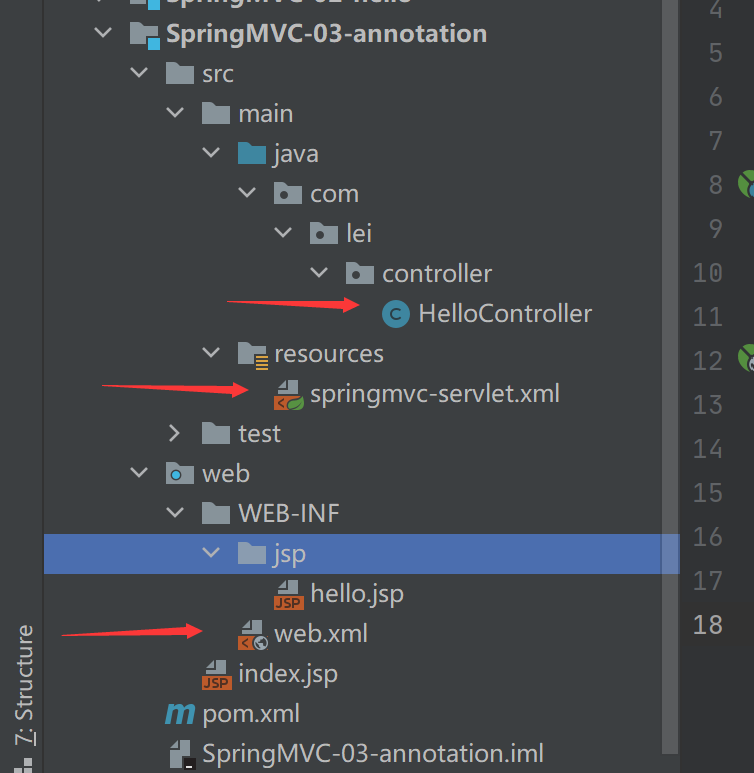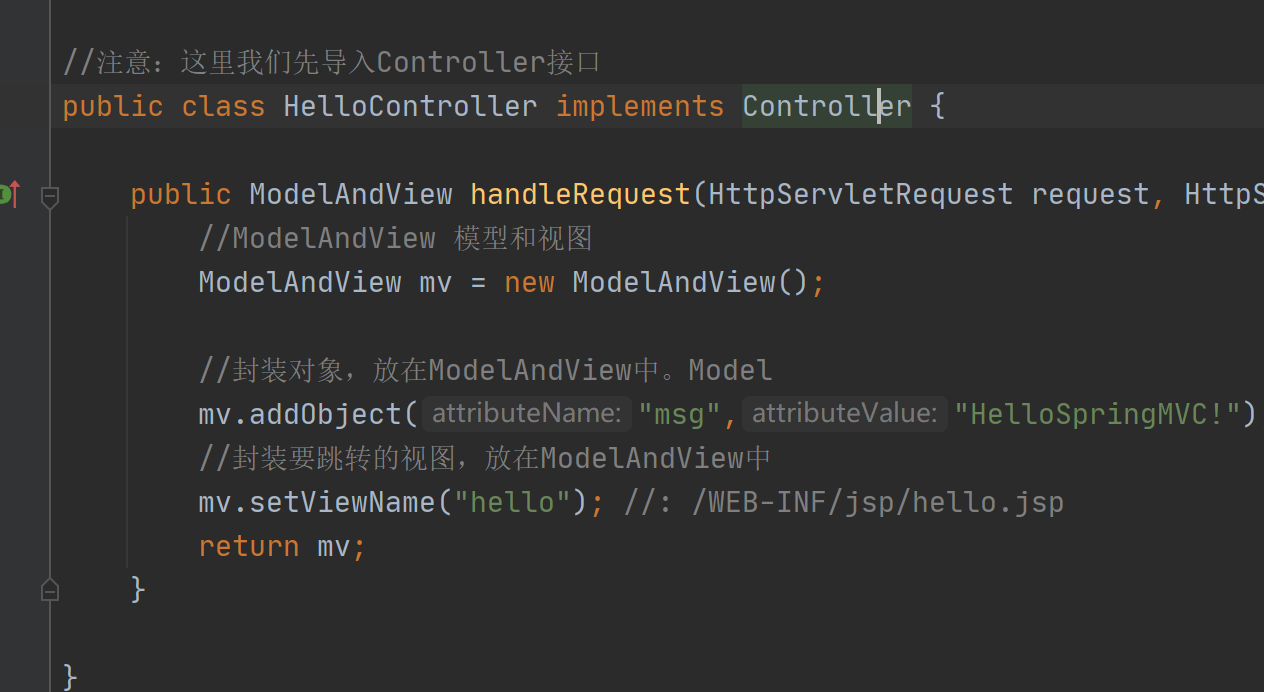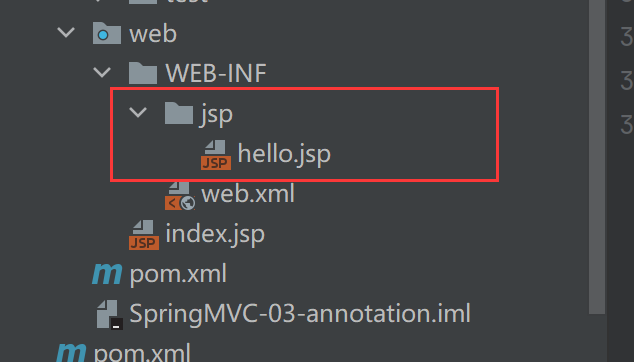配置这三个就可以。

controller
import org.springframework.stereotype.Controller; import org.springframework.ui.Model; import org.springframework.web.bind.annotation.RequestMapping; @Controller public class HelloController { //真实访问地址 : 项目名/HelloController/hello @RequestMapping("/hello") public String sayHello(Model model){ //向模型中添加属性msg与值,可以在JSP页面中取出并渲染 model.addAttribute("msg","hello,SpringMVC"); //web-inf/jsp/hello.jsp return "hello"; } }
这里的返回值hello的意思就是 经过拼接——》去往hello.jsp。
根据
@RequestMapping("/hello")
我们可以跳转到项目/hello页面,然后带来的参数是hello springmvc。
输出的页面是hello springmvc。如果我们跳转到/hello2 带的参数是helloworld 那么这就实现了jsp文件的复用。
同时我们可以指定方法

在类上写了RequestMapping("/admin")的话,又在方法上面写了RequestMapping("/user")
那么进行跳转的URL就是 项目名/admin/user
利用@Controller注解 可以将此类表示为一个Controller(Handler)
在上一节我们还是用他来实现函数式接口Controller呢。
函数式接口的弊端在哪呢:
函数式接口只能实现1个方法。使用注解,方法不同 返回值不同,到的jsp也不同。
需要为这个类去注册bean。

springmvc.xml
<?xml version="1.0" encoding="UTF-8"?> <beans xmlns="http://www.springframework.org/schema/beans" xmlns:xsi="http://www.w3.org/2001/XMLSchema-instance" xmlns:context="http://www.springframework.org/schema/context" xmlns:mvc="http://www.springframework.org/schema/mvc" xsi:schemaLocation="http://www.springframework.org/schema/beans http://www.springframework.org/schema/beans/spring-beans.xsd http://www.springframework.org/schema/context https://www.springframework.org/schema/context/spring-context.xsd http://www.springframework.org/schema/mvc https://www.springframework.org/schema/mvc/spring-mvc.xsd"> <!-- 自动扫描包,让指定包下的注解生效,由IOC容器统一管理 --> <context:component-scan base-package="com.lei.controller"/> <!-- 让Spring MVC不处理静态资源 --> <mvc:default-servlet-handler /> <!-- 支持mvc注解驱动 在spring中一般采用@RequestMapping注解来完成映射关系 要想使@RequestMapping注解生效 必须向上下文中注册DefaultAnnotationHandlerMapping 和一个AnnotationMethodHandlerAdapter实例 这两个实例分别在类级别和方法级别处理。 而annotation-driven配置帮助我们自动完成上述两个实例的注入。 --> <mvc:annotation-driven /> <!-- 视图解析器 --> <bean class="org.springframework.web.servlet.view.InternalResourceViewResolver" id="internalResourceViewResolver"> <!-- 前缀 --> <property name="prefix" value="/WEB-INF/jsp/" /> <!-- 后缀 --> <property name="suffix" value=".jsp" /> </bean> </beans>
<context:component-scan base-package="com.lei.controller"/>
这句话是为了扫面controller包下的 各个类的注解。
如果声明这句话 且类名上有controller的注解,就可以不用到xml进行bean的注册了。
相同的注解还有Component、Service、Property
web.xml
<?xml version="1.0" encoding="UTF-8"?> <web-app xmlns="http://xmlns.jcp.org/xml/ns/javaee" xmlns:xsi="http://www.w3.org/2001/XMLSchema-instance" xsi:schemaLocation="http://xmlns.jcp.org/xml/ns/javaee http://xmlns.jcp.org/xml/ns/javaee/web-app_4_0.xsd" version="4.0"> <!--1.注册servlet--> <servlet> <servlet-name>SpringMVC</servlet-name> <servlet-class>org.springframework.web.servlet.DispatcherServlet</servlet-class> <!--通过初始化参数指定SpringMVC配置文件的位置,进行关联--> <init-param> <param-name>contextConfigLocation</param-name> <param-value>classpath:springmvc-servlet.xml</param-value> </init-param> <!-- 启动顺序,数字越小,启动越早 --> <load-on-startup>1</load-on-startup> </servlet> <!--所有请求都会被springmvc拦截 --> <servlet-mapping> <servlet-name>SpringMVC</servlet-name> <url-pattern>/</url-pattern> </servlet-mapping> </web-app>
然后需要在 建一个jsp文件夹
因为我们在视图解析器里面 进行了前后缀的拼接 所以必须固定在这个文件夹下。
